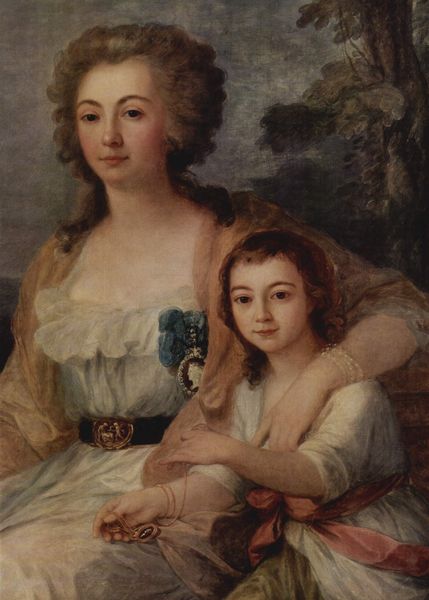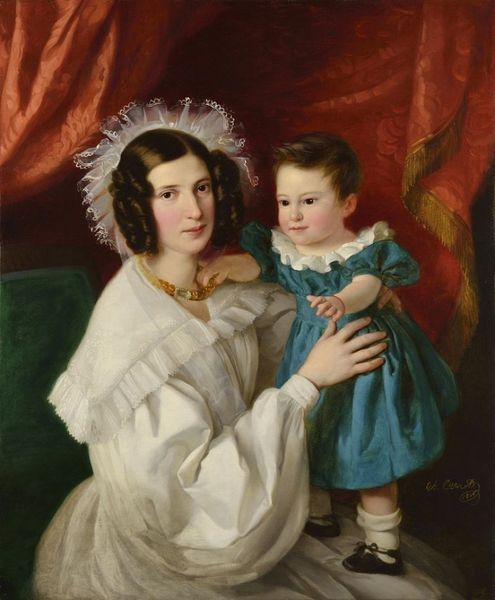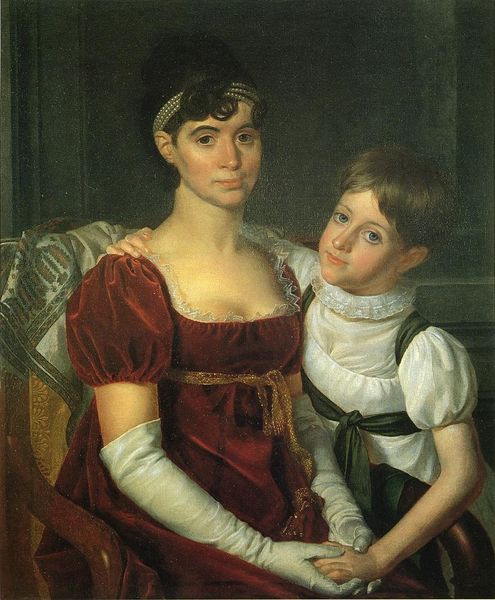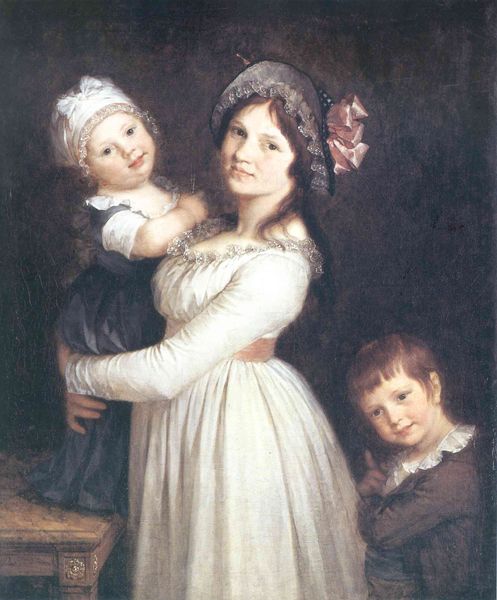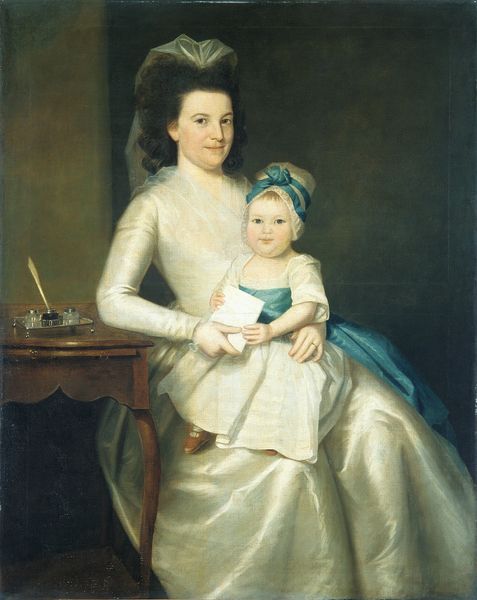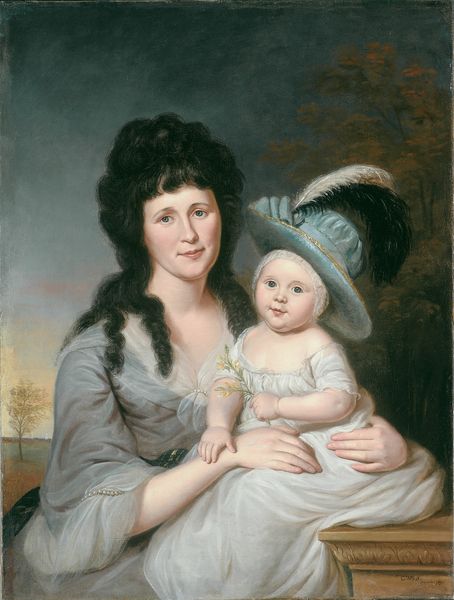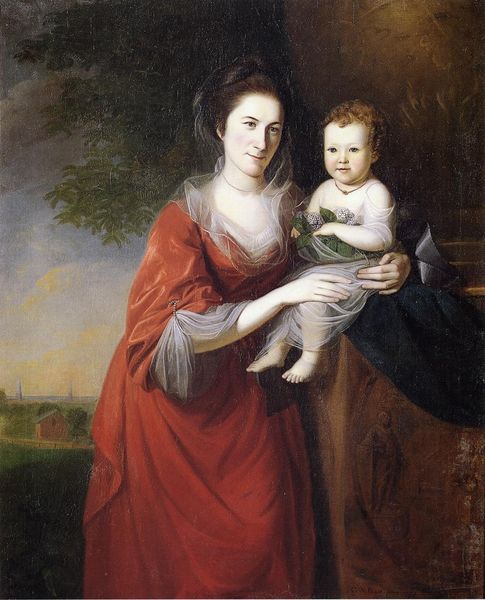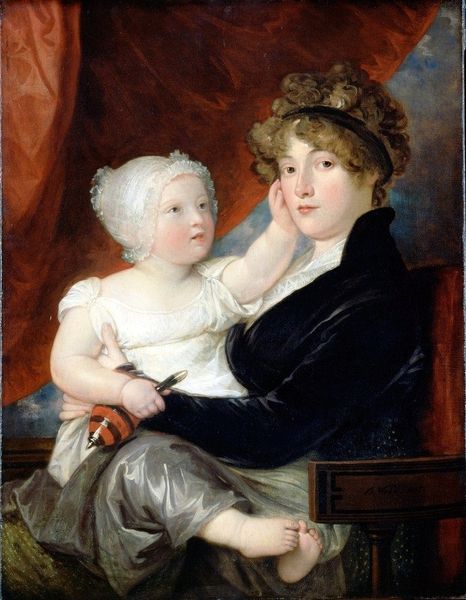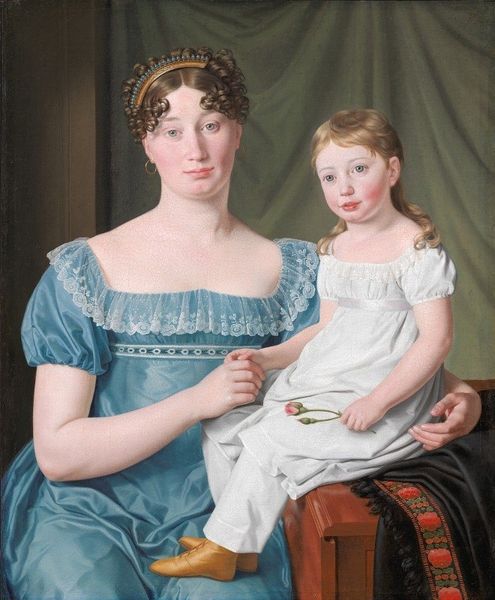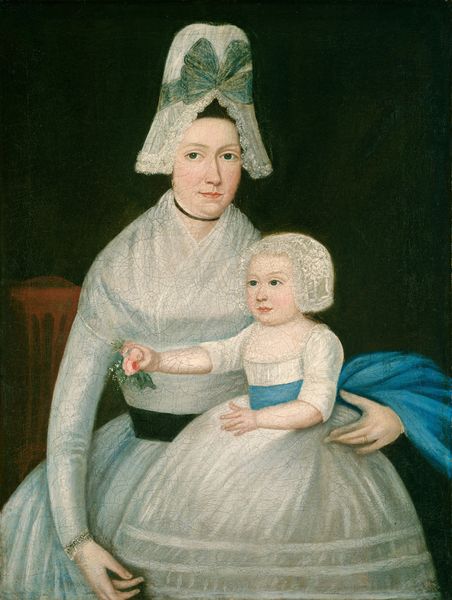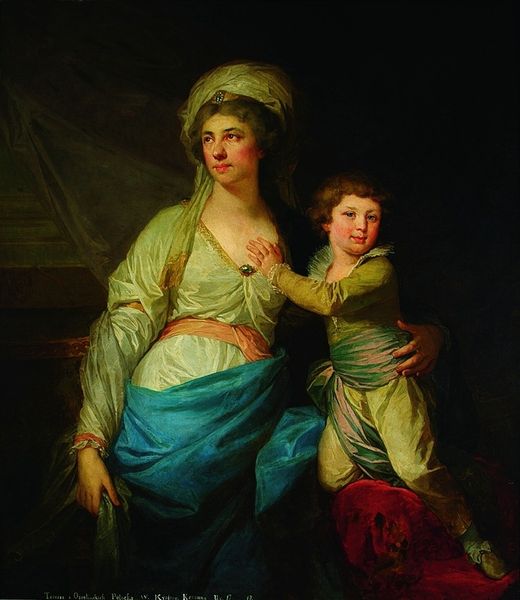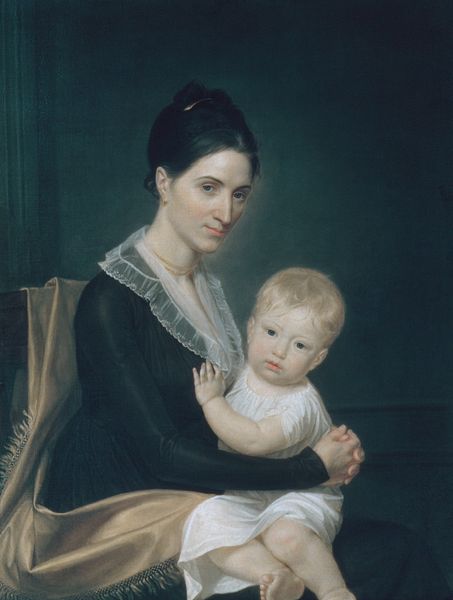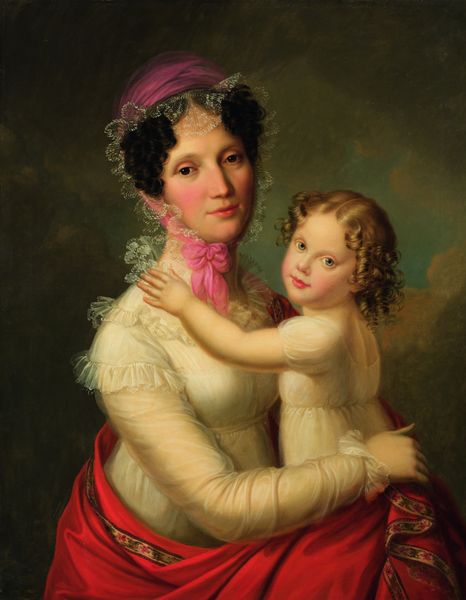
painting, oil-paint
#
portrait
#
painting
#
oil-paint
#
romanticism
#
genre-painting
Dimensions: 98 x 76.5 cm
Copyright: Public domain
Curator: Looking at this "Portrait of a woman with her child," executed in oil paint, the first thing I notice is its striking simplicity. The limited palette and gentle contours give it an immediate feeling of understated elegance. Editor: It evokes a strong sense of maternal serenity, wouldn't you say? The composition is so calm, and that subtle tension between the mother’s controlled expression and the child’s innocent gaze is compelling. It makes me think about how motherhood was viewed at the time. Curator: Precisely. See how Prud’hon directs our eye with the placement of light? It's a classic Romantic composition. The use of sfumato softens the features, almost idealizing them. What visual strategies is Prud'hon deploying here, beyond a simple documentation of reality? Editor: He’s presenting a social narrative, carefully constructing an image of ideal motherhood, a theme that resonated deeply in French society following the revolution. Think of the rise of sentimentality and family values that took root politically. The shared hand suggests intimacy and societal expectations. Curator: Absolutely. The delicate modeling of their faces contrasts sharply with the broad strokes of the background, forcing our attention on their interaction. Semiotically, we might even read the shared touch as symbolic—a physical manifestation of an unbreakable bond. Editor: Indeed, although I would emphasize how Prud’hon utilizes an idealized version of mother and child in his work, a very popular mode of portraying domestic tranquility during a tumultuous period. This portrait functions almost like a piece of propaganda, silently reinforcing particular social norms. Curator: That is quite incisive! Considering its construction – line, form, texture – it offers a refined study of affect, or emotional display. Prud'hon is constructing an aesthetic object that, in turn, creates cultural capital around the notions of motherhood. Editor: Which tells us so much about the societal conditions from which this artwork originates! I find myself wondering about the sitters and what kind of dialogue Prud'hon intended to open. It really brings up a wealth of perspectives regarding 18th-century France. Curator: An intriguing case, indeed, how line and shadow shape the viewer's perception. Editor: Absolutely! This little journey underlines that the most poignant art can inspire multiple narratives.
Comments
No comments
Be the first to comment and join the conversation on the ultimate creative platform.
